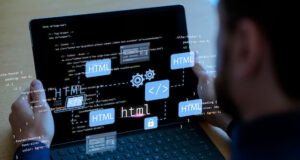The internet is abuzz with news about ChatGPT and its widespread use in various fields. This next-generation language model has the ability to generate text based on user input, making it a versatile tool. While it has gained popularity for writing homework, university essays, and even Python code, there are discussions about its potential in medicine. In this article, we will explore what Chat GPT can offer and its limitations in its current form.
How ChatGPT Works
ChatGPT operates similarly to the well-known AI image generator, Me Journey. Both require a prompt and then work their magic. Me Journey creates stunning pictures based on text briefs, while Chat GPT aims to answer questions by gathering information from the web. Prior to 2021, Chat GPT’s ability to answer questions surpassed that of a Google search. Furthermore, it can be used for a wide range of purposes.
For instance, I recently used ChatGPT to create a non-alcoholic cocktail. With just a few seconds, it provided me with the perfect recipe and a catchy name. Additionally, I asked it to generate science fiction short story ideas about the future of healthcare, and it performed exceptionally well, inspiring me in the process. When I copied clinical cases from the field of internal medicine, Chat GPT successfully solved most of them. The use cases for Chat GPT are endless.
The Potential in Healthcare
One area where Chat GPT could be implemented is clinical documentation. By training Chat GPT on medical records, it can assist doctors and nurses in creating accurate and detailed clinical notes. For example, a doctor can dictate a patient’s visit, and Chat GPT can transcribe the visit, generating a structured note that includes the patient’s main symptoms, history, physical examination, assessment, and plan. This has the potential to save time and increase the efficiency of documentation.
Furthermore, Chat GPT can be utilized as a symptom checker. It already performs well in answering general questions in various areas, such as diabetes or financial safety for the elderly. While the answers are general, they provide a correct summary of the basics. In the future, Chat GPT could interact with patients, asking specific questions about their symptoms to narrow down the possibilities and provide relevant information, such as possible conditions or illnesses. This could be a game-changer in terms of providing accurate and tailored information to patients without overwhelming them.
Another promising application of Chat GPT is as a medical chatbot. With a global shortage of doctors, an AI assistant like Chat GPT could fill the gap. By integrating Chat GPT into a chatbot, it could interact with patients, provide general health information, answer questions, and even help schedule appointments. An advanced chatbot could also generate a report for the doctor, allowing them to quickly get up to speed before the face-to-face appointment. However, for these critical tasks, Chat GPT would require further development to address its limitations.

Limitations and Challenges
While Chat GPT shows promise, it also has limitations that need to be addressed. One significant problem is the lack of citation for the information it provides. In medicine, this is a serious issue as it affects the trustworthiness of the answers. Without proper references and sources, it becomes challenging to verify the accuracy of the information. For example, if a doctor sends a letter generated by Chat GPT to an insurance company and the diagnostic test gets rejected due to the lack of proper literature citation, it can have severe consequences.
Additionally, Chat GPT has no access to the internet or scientific literature after 2021. This means that it cannot provide the most up-to-date information. It also highlights the need for human fact-checkers to ensure the accuracy of AI-assisted papers and research. As algorithms like ChatGPT become more prevalent in healthcare, it is crucial for society to embrace the role of fact-checkers to avoid potential errors and misinformation.
The Future of AI in Healthcare
Despite its limitations, ChatGPT and other AI tools in healthcare are advancing rapidly. Google’s DeepMind recently announced the release of Matpom, a large language model designed specifically to answer healthcare-related questions. These models are already significantly better than previous algorithms and provide a new level of human-AI interaction.
In a world where there is a shortage of 5 million doctors, AI tools like ChatGPT can fill the gap and ensure that patients receive the care they need. As these models continue to improve, the risk of missing care due to capacity shortages outweighs the risk of algorithmic errors. It is essential for healthcare professionals and patients to familiarize themselves with AI tools like Chat GPT to make the transition smoother.
The Wider Impact of AI after ChatGPT: How It’s Changing Everything Beyond ChatGPT
AI tools are not limited to healthcare. They are popping up in various industries, offering limitless possibilities. For example, with AI-driven services like Striking.com, you can create a website for your medical practice within seconds. Tools like Me Journey and Dolly allow you to create unique logos effortlessly. Hooden.com lets you make instructional marketing videos with deepfake technology, and Voice.ai allows you to add a celebrity voice to your content. AI will revolutionize diagnostics, drug design, treatment planning, radiology, pathology, oncology, and the entire healthcare field.
Conclusion
AI, including ChatGPT, is poised to transform healthcare as we know it. While there are limitations and challenges that need to be addressed, the potential benefits outweigh the risks. It is crucial for healthcare professionals and patients to familiarize themselves with these AI tools to ensure a smooth transition and to embrace the wider possibilities they offer. The future of healthcare is here, and AI is at the forefront of this revolution.








